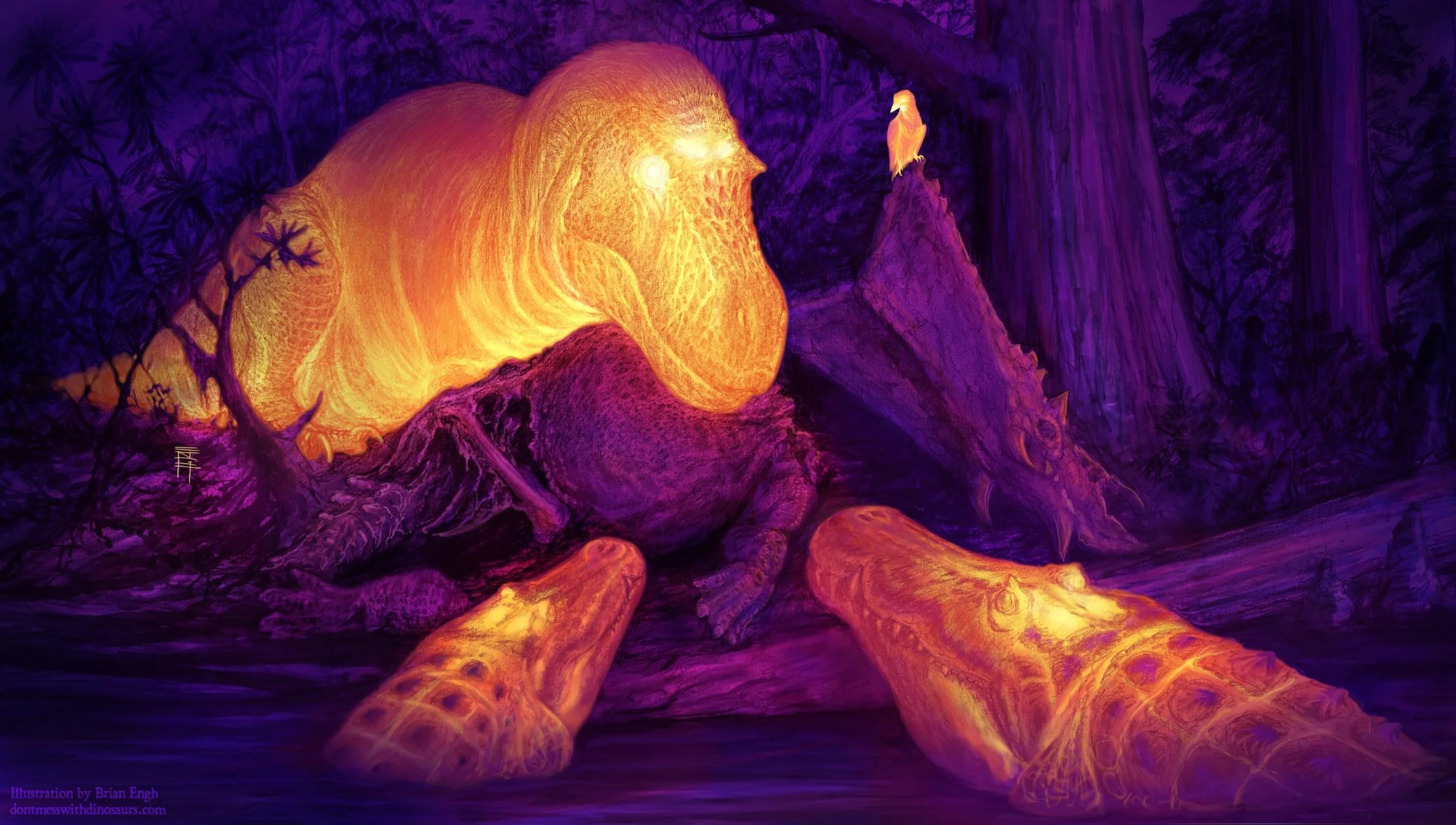Scientists keep making incredible discoveries in the field of paleontology. The latest of which is regarding the Tyrannosaurus Rex, one of the most well-known dinosaurs and popularized in many films. It speaks to our imagination as one of the more enormous meat-eating dinosaur species that have ever roamed the Earth.
An expressive thermal image of a Tyrannosaurus Rex shown with its dorsotemporal fenestra vibrantly glowing.- Image Credits: Brian Engh
Researchers from the University of Florida, Ohio University and the University of Missouri propose that T-rex had an air-conditioner in its head. With this claim, they are flying in the face of theories that have stood for over a century.
It all hast to do with two large holes that can be found in the top of the tyrannosaurus rex's skull. Scientists previously thought that they were filled with muscles tasked with supporting jaw movement. The idea of muscles in that location didn't quite sit right with Casey Holliday, lead scientist on the study.
He stated that it is strange for a muscle to come up from the jaw, make a 90-degree turn, and then go along the roof of the skull. He continues by stating that there is a lot of compelling evidence for blood vessels in that particular location. The evidence for this is mainly based on studies on alligators and comparable reptiles.
The massive T-rex is a sight to behold. Here seen at the Carnegie Museum of Natural History in Pittsburgh - Image Credit: ScottRobertAnselmo via Wikimedia Commons
To further support their hypothesis, researchers used thermal imaging to examine alligators. They now believe their evidence offers a new understanding of the composition of a T-rex's head.
The coordinator of laboratories at the department of biology from the University of Florida, Kent Vliet, stated that the body heat of an alligator is dependent on its surroundings. He substantiated this statement by pointing out that they noticed big thermal hot spots on the holes in the roof of their heads when they were trying to warm up in a chillier surrounding.
The scientists concluded that the holes in the head of the Tyrannosaurus Rex were probably also filled with blood vessels, similar to those in the skulls of alligators. They are effectively creating a rift with the current school of thought up until now, that has been putting muscles at those locations for over a hundred years.
Sources and further reading: The Frontoparietal Fossa and Dorsotemporal Fenestra of Archosaurs and Their Significance for Interpretations of Vascular and Muscular Anatomy in Dinosaurs / University of Missouri-Columbia press release / Tyrannosaurus / The Proto-Wing Puzzle: How Dinosaurs Shaped the Future of Flight (Universal-Sci)
If you enjoy our selection of content please consider following Universal-Sci on social media:











